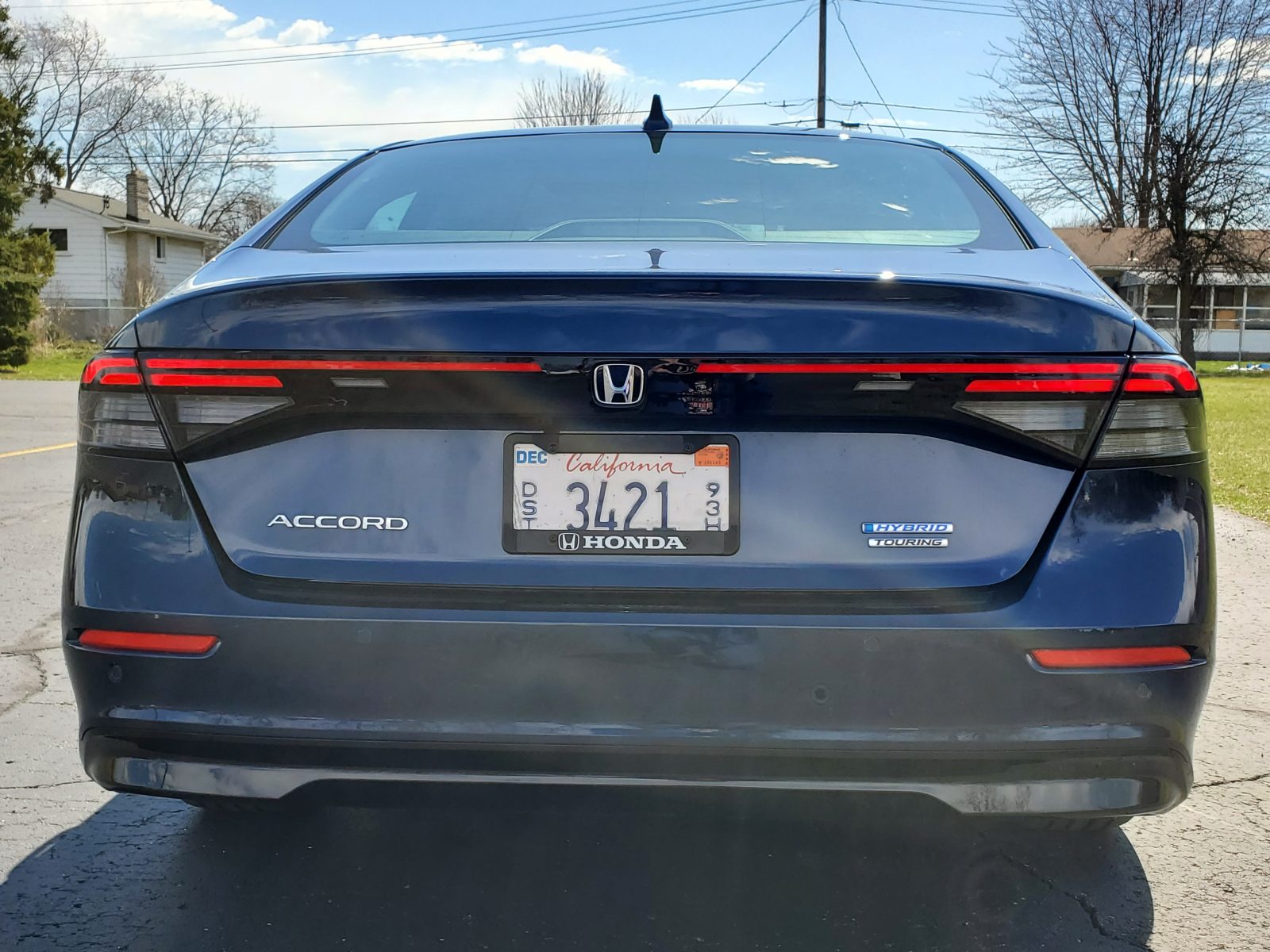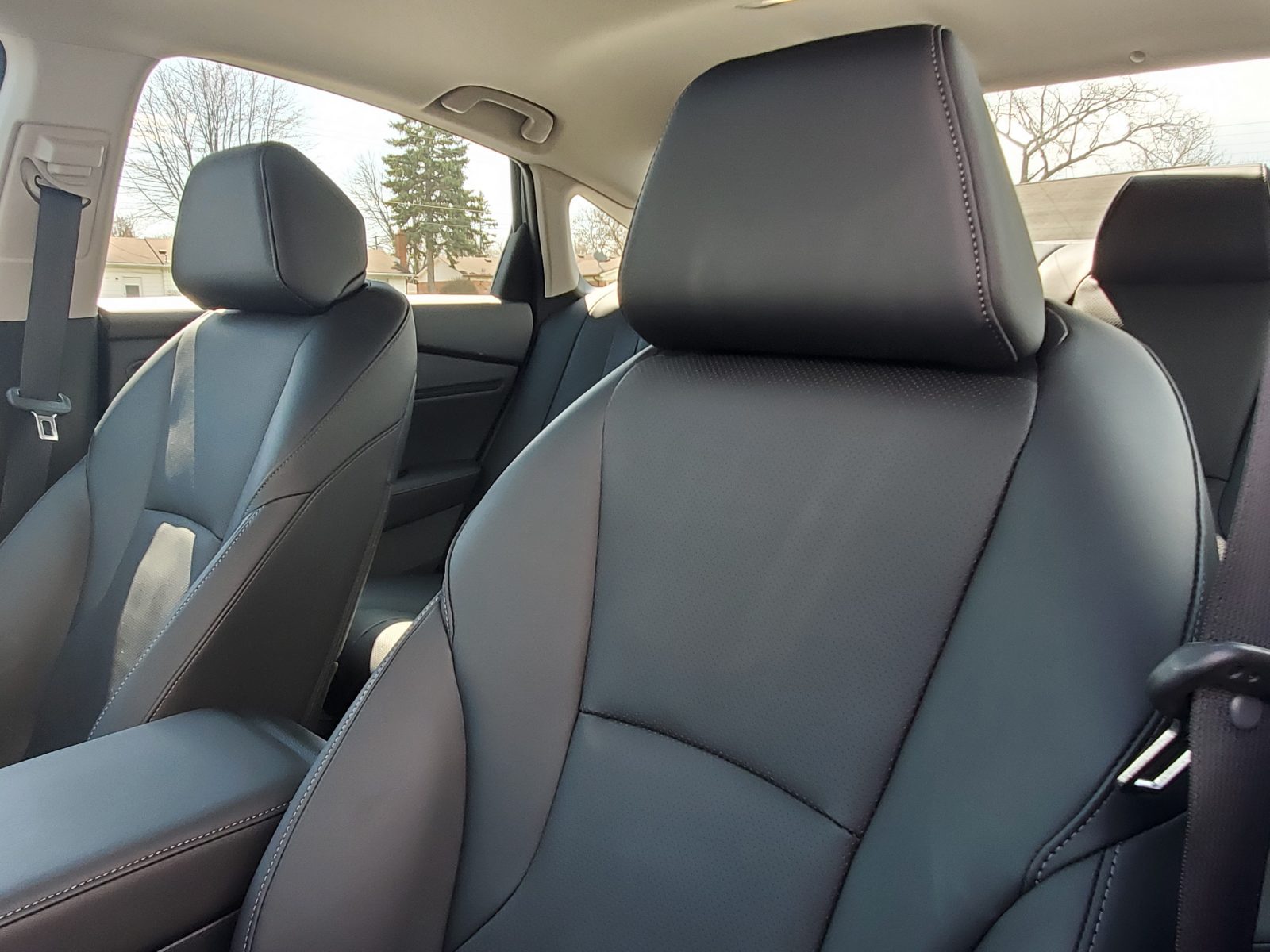Honda may be shifting the bulk of its focus to SUV and CUV sales, but the Japanese auto giant is still keeping its eye on the mid-size sedan market. The Honda Accord has served the company well and is still a key sales generator for Honda even after several decades in production. However, the nameplate is feeling the pinch from buyers shunning the sedan in favor of utility vehicles. But Honda is not giving up hope and has unveiled another major revamp for the Accord, but has the sedan found the winning formula with an all-hybrid engine lineup and updated exterior styling?
Accord Touring Hybrid’s Exterior Styling Tries To Be Sportier, Misses The Memo

If the Accord were judged by its looks alone, there would be some red ink on its proverbial report card. The front fascia is more assertive than before, with the reworked front grille and headlights giving the model a serious-looking face that meshes well when paired with specific colors. The side profile is inoffensive and is on par with a few of its other rivals in terms of how well it blends into the background.

However, move to the rear of the Accord, and it’s here where the look falls flat on its face. The rear bumper is too bland for its own good, and the taillights appear to have, unfortunately, used a few ingredients from the axed Volkswagen Passat, with the lighting and the trunk design also doing little to project the enhanced vigor that Honda is trying to project here. At least the 19-inch alloy wheels on our Touring Tester look attractive, and they look better than the optional HPD-sourced hoops (a $2,000 extra). This clumsiness is also pretty evident when you view the Accord alongside a few of its dwindling rivals; the Toyota Camry, for example, has a more cohesive design and looks sportier.
Google Infused Infotainment System Sets Tech Benchmark for Accord & Segment

Slip inside the Honda Accord, and you’ll find a clean function-focused cabin. While you see the Teutonic vibes that some of its European rivals have, there are still several touches that help brighten things up a bit. The long unified air vent/trim piece that we have seen in several other Honda products makes its mark here in the Accord, and designers also focused on ergonomics with the cabin boasting a balanced blend of traditional physical controls and other functions that are housed in the infotainment system.

A 7.0-inch infotainment system is standard, but higher trims like our Touring example get a larger 12.3-inch display bundled with Google’s Built-In software. The Accord was the first Honda product to come with Google Built-In, and the suite not only adds Google Maps and Google Assistant into the system but it even allows buyers to access the Google Play Store to help customize the splash page to their specific needs. This system will eventually trickle down to a wider net of models, including the Acura ZDX and Honda Prologue EVs. The leather seats in our tester were comfortable and decently supportive, but lower back support was noticeably lacking like other mid-size sedans we have tried out over the years.
The rear seat room in the Accord is pretty good, but the space itself is rather spartan, and rear passengers won’t find very many frills back there. Thankfully, the large rear trunk is great for hauling cargo, and we put the trunk to work during our time with the Honda, including a whole load of groceries and several other bulky items.
Hybrid Performance Is More Efficient, But Where’s The Sauce?

One of the highlights that defined our time with the last generation Accord was the optional 2.0-liter turbocharged engine. This engine was lifted from the Civic Type R, allowing the Accord to blur the line between it and its Acura-badged cousins when it came to performance while also possessing a hidden Q-Ship vibe. Unfortunately, that engine was axed for the 11th generation Honda Accord and all models are now four-cylinder only, with a hybrid engine being the default choice for higher trim levels.
Accord LX and EX models are powered by a 192-horsepower 1.5-liter, turbocharged, four-cylinder mated to a CVT. Meanwhile, Sport, EX-L, Sport-L, and Touring models are powered by a bigger 204-hp, 2.0-liter, four-cylinder engine that’s mated to two electric motors. Honda reps claim that the steering and suspension have benefitted from some revisions, but while our tester had balanced handling, we were left wanting more in the raw power department. The 2.0-liter in our tester felt sluggish (despite hitting 60 mph in 6.6 seconds), and passing on the freeway left plenty to be desired, even in Sport mode.

This lack of power may be a prominent weakness, but the engines provide a commendable tradeoff for the weak-kneed performance and fuel economy. While the non-hybrid engine gets only 29 mpg in the city and 37 mpg on the freeway, the 2.0-liter hybrid gets beefier figures with 51 mpg and 48 mpg in the same categories. Honda is pushing toward a green future, and while the fuel economy offered by the 2.0-liter hybrid is very impressive, an engine like this needs to do a good job balancing fun and efficiency. In our view, the Accord needs more time to find that delicate middle ground.
Value Quotient
Pricing for the 2023 Honda Accord starts at $27,295 for a base non-hybrid model. The base hybrid model is the $31,345 Sport model, with prices increasing accordingly as you climb the trim ladder. Our Touring tester had a base price of $37,340, with fees and a light sprinkling of options helping to push the final price to just over $38,000.
That’s slightly more expensive than the Camry XSE hybrid and the Hyundai Sonata hybrid. However, like those two models, the dwindling ranks of the mid-size segment also force the Accord to go up against similar rivals in smaller segments, including the Toyota Prius and the smaller Toyota Corolla and Hyundai Elantra hybrids.
When viewed as a whole, the 2023 Honda Accord Hybrid lineup is a tale of two cars. On the one hand, it’s perhaps the most technologically advanced Accord yet, and some of its sporty styling helps it look more youthful from some angles. However, look past the initial first impressions and see some clumsiness and unanswered questions lurking in the fine print. We wish the 2.0-liter had more power and the styling had more aesthetic balance to reflect its broader intentions.

Carl Malek has been an automotive journalist for over 10 years. First starting out as a freelance photographer before making the transition to writing during college, his work has appeared on numerous automotive forums as well as websites such as Autoshopper.com.
Carl is also a big fan of British vehicles with the bulk of his devotion going to the Morgan Motor Company as well as offerings from Lotus, MG, and Caterham. When he is not writing about automobiles, Carl enjoys spending time with his family and friends in the Metro Detroit area, as well as spending time with his adorable pets.



















